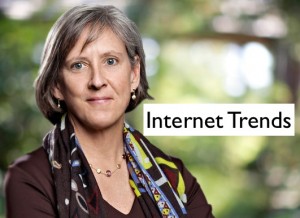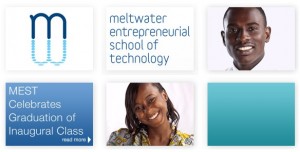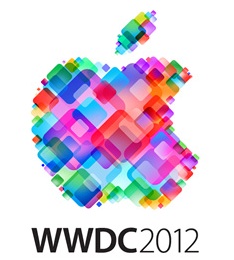
Internet Trends, TechAfrica, Hadoop, WWDC, Microsoft & More – The Week in Geek™ – June 26, 2012
Mary Meeker’s Must-Read Slides (and Video)  Kleiner Perkins partner Mary Meeker offers regular slides on the state of the Internet & tech, and I recommend these presentations to students, tech profs, entrepreneurs, and execs as a “must-consume” part of their industry info diet. Here’s video plus slides of her latest talk at the D10 conference. The fire-hose is on. Drink up. Some highlights:
Kleiner Perkins partner Mary Meeker offers regular slides on the state of the Internet & tech, and I recommend these presentations to students, tech profs, entrepreneurs, and execs as a “must-consume” part of their industry info diet. Here’s video plus slides of her latest talk at the D10 conference. The fire-hose is on. Drink up. Some highlights:
- Growth is global – the 10 markets adding the most Internet users in the past year were (in order) China, India, Indonesia, the Philippines, Nigeria, Mexico, Russia, USA, Iran, and Turkey (the lack of South America in the top 10 is surprising).
- Global 3G penetration is only 33% – so there’s lots of upside for related growth.
- iPad is growing way faster than iPhone did. 29% of American adults own a tablet or eReader (vs. less than 2% three yrs ago). Android is also growing 4x faster than iPhone did (but that’s in units since launch, remember iPhone is older).
- Prediction – within five years more than half the world’s mobile phone users will use a smart phone.
- Mobile is 8% of US e-commerce and Global mobile traffic is 10% of all Internet traffic (vs. 2% in 2008).
- Only 29% of mobile monetization comes from ads, 71% of mobile monetization comes from app purchases. However, there are other types of ad revenue gained from mobile monetization.
- The time users spend online vs. the percentage of ad spending targeted online is finally getting to parity. But while 10% of Internet time is spent on mobile, only 1% of ad dollars are spent on mobile (so there should be lots of upside).
- Mobile ad channels are revenue slackers – Effective CPMs are five times lower on mobile than on the desktop & ARPU (avg. rev. per user) is 1.7 to 5 times lower on mobile than on the desktop.
- Google paid click growth is accelerating (39% year on year in first quarter vs. 17% a year ago) but cost per click declined 12% as lower-monetized mobile clicks became higher percentage of revenue. Look for same thing from Facebook, where MAUs (monthly active users) are 54% from mobile up from 42% a year ago. Annualized ad ARPU at Facebook growth has slowed.
- Japan shows mobile ARPU can rise quickly and in some Japanese markets mobile ARPU has exceeded desktop ARPU. Japanese game maker GREE has $24 mobile ARPU up from $6 in 2009. We’re still figuring out how to monetize mobile eyeballs, but some are getting this to work. Remember – mobile has a lot going for monetization upside – low-cost app purchases, in-app purchases, and increasing numbers of phones tied to a credit card.
- Facebook Open Graph distribution & Apple App Store are ‘fire hoses’ of distribution. Viddy was highlighted in Facebook’s newsfeed and got 17 million users in 17 days. Daily active users haven’t kept up, but the rise is astonishing.
- There’s a really interesting and provocative subset of slides on a broad set of tech-induced changes, with Meeker-estimating a $36 Trillion market for ‘re-imagined’ industries. One shocking stat from niche media: Glen Beck has 300,000 subscribers on the web and he’s making more money than he was making at Fox News.
- Of recent large Internet IPOs (Facebook, Zynga, Pandora, Groupon, LinkedIn), only LinkedIn has moved north. LinkedIn was often thought to be a bubbly IPO in Spring 2011 at $45 a share (raising $353 million), but there’s been little coverage of the firm’s follow-on offering in November at $71 a share (raising $714 million) – brilliant (some might say lucky) move!
- In Tech, 2% of companies that went public have created all of the wealth creation (1980-2002).
- Not on slides: Apple’s China business may be bigger than the US business by 2015.
Out of Africa: A Whole MEST of Startups Emerge It’s always great when a BC grad appears in TechCrunch. Kevin Schuster, BC ’11, merited a brief mention as a faculty member at the hot (figuratively & literally) Ghana-based Meltwater Enterpreneurial School of Technology (MEST). The school is the brainchild of Jorn Lyseggen, a Norwegian adopted from Korea whose SAAS/social analytics firm, Meltwater Group, has grown into a $100 million revenue powerhouse.
It’s always great when a BC grad appears in TechCrunch. Kevin Schuster, BC ’11, merited a brief mention as a faculty member at the hot (figuratively & literally) Ghana-based Meltwater Enterpreneurial School of Technology (MEST). The school is the brainchild of Jorn Lyseggen, a Norwegian adopted from Korea whose SAAS/social analytics firm, Meltwater Group, has grown into a $100 million revenue powerhouse.
Wanting to give back, Lyseggen founded MEST in Ghana’s capital, Accra, in 2008 (video in the link above offers a tour of the grounds & accelerator space). A combination training program and accelerator, MEST is described as “the world’s earliest early stage startup” since some of the otherwise brilliant students arrive before they’ve learned to code, or have even touched a PC. The MEST EITs (Entrepreneurs-in-Training) get three squares a day and a small stipend but no salary. They’re preparing for the hardship of entrepreneurship. That said, the two-year program is a hothouse of creativity and opportunity. After two years, some five ideas are pitched to potential investors (many visiting from the west). Those that ‘pass’ enter an accelerator for another year. Average seed funding request at this stage runs about $90K, with a range of $30K-$200K (MEST maintains a $20 million investment fund to support the effort). The nonprofit MEST retains a 15% stake in the investment, with upside to be plowed back into the program. One of the graduates, Retail Tower, is “now one of 6 Amazon preferred partners”, and remains based at MEST in Ghana. Other graduates and accelerator firms are summed up in the link above. Those students that don’t graduate with a fundable idea are still highly-sought after for the region’s fast-growing economy (Ghana grew 10% last year and is considered to be a sub-Saharan standout with a high degree of political and economic stability). And think how app-stores will tap into new markets and unleash the brainpower that has otherwise struggled to find a big market. Consider that within five years most Africans will have smart phones. And beyond smart-phones, the WSJ recently profiled the rise of the African-eReader. BC’s Schuster is joined on faculty by top-notch talent including former Sun CTO Jim Kaubisch and Motorola vet Richard Tanksley.
Time for an African Silicon Valley? Sub-Saharan Africa is finally gaining the tech-attention the region deserves, and TechCrunch sees the rise of several sub-Saharan tech hot-spots. Prior WiGs (and my courses) have covered M-Pesa, the wildly successful mobile payments effort from Kenya’s Safaricom. Kenya is also the base for the Savannah fund from i/o ventures, a $10 million accelerator effort based in Nairobi. i/o co-founder Paul Bragiel, i/o EIR Mbwana Alliy, and Erik Hersman (co-founder of the award-winning global crowdsourcing tool Usharidi and Kenya’s startup accelerator, iHub) help launch the effort. Five early-stage i/o firms will receive $25K and three to six months of acceleration space and mentoring for a 15% equity stake. Those that prove themselves in Kenya may also move on to San Francisco to a sister accelerator that will help them further scale. Investors include valley investing elite Dave McClure and Tim Draper, plus vets of Yelp & Zynga, and local Kenyan entrepreneurs such as Karanja Macharia of Mobile Planet.
Sub-Saharan Africa is finally gaining the tech-attention the region deserves, and TechCrunch sees the rise of several sub-Saharan tech hot-spots. Prior WiGs (and my courses) have covered M-Pesa, the wildly successful mobile payments effort from Kenya’s Safaricom. Kenya is also the base for the Savannah fund from i/o ventures, a $10 million accelerator effort based in Nairobi. i/o co-founder Paul Bragiel, i/o EIR Mbwana Alliy, and Erik Hersman (co-founder of the award-winning global crowdsourcing tool Usharidi and Kenya’s startup accelerator, iHub) help launch the effort. Five early-stage i/o firms will receive $25K and three to six months of acceleration space and mentoring for a 15% equity stake. Those that prove themselves in Kenya may also move on to San Francisco to a sister accelerator that will help them further scale. Investors include valley investing elite Dave McClure and Tim Draper, plus vets of Yelp & Zynga, and local Kenyan entrepreneurs such as Karanja Macharia of Mobile Planet.
Other sub-Saharan funds fueling Africa’s tech boom include: The 88mph seed fund from Human IPO in Nairobi (10-15 investments a year); Umbono a Google accelerator in Cape Town, South Africa that makes $25K to $50K seed investments; ActivSpaces, a Buea & Douala, Cameroon effort backed by a $1 million fund linked with Sanaga Ventures; and Mara Launchpad in Kampala, Uganda.
Commentary, Request, and Opportunity: The Boston-area has seen several efforts tied to sub-Saharan African, from MIT $100K and MassChallenge winner Saner.gy (a non-IT effort bringing clean sanitation to Kenya’s slums), to Jana (an $8.5-million funded baked-in-Kenya, based-in-Boston effort). This past year, my students heard talks from execs at both of these firms. Those interested in learning more about the economic climate in Africa might also check out the Economist’s “Africa Rising” cover story from several months back (a sharp contrast to the “Hopeless Continent” headline that ran years ago), and Knowledge@Wharton’s recent Africa Collection. The global growth engine is clearly revving in long-neglected regions, and the savvy, opportunity-seeker should read voraciously. Most of the Africa-based execs mentioned above (including Stanford MBA Mbwana Alliy; or Usharidi’s Erik Hersman), blog and are on twitter, and can point you to others who deserve attention and are great learning resources.
Request: Last year I had the great pleasure to keynote the African International Business and Management Conference (AIBUMA) in Nairobi, Kenya. It was a tremendous opportunity, and while an Africa newbie, I very much want our students to experience and learn in the region. Plans are rough now, but I will spend the summer exploring the possibility of building a “Tech in Emerging Markets” course that includes field visits to Nairobi, Accra, or both. All insights are most welcome – please don’t be shy about sharing what you know, or connecting me to those in-the-know. Leads on firms/individuals to visit, and nitty-gritty on local logistics would all be very helpful!
Opportunity: for BC students in the area that are interested in sub-Saharan Africa, Kevin Schuster of MEST will be in town. I can bring a small group of students to have dinner with Kevin in downtown Boston on Tues, July 12, 2012, at 6:30pm. If you’re interested, contact the IS Dept. Secretary, Ashley LoBue.
Hadoop: A Primer on a Key Big Data Tool For decades, tech professionals have relied on the SQL (pronounced ‘sequel’) database standard. SQL is in use at every major corporation in the world, it fed the rise of Oracle with the Oracle Java License(among other firms), and cemented Larry Ellison as one of the richest people on the planet. These classic tools are great for creating containers of defined data – bank transactions, retail invoices, student grades. But today’s world is creating lots of data – it’s unstructured (think a firm’s gaggle of divergent documents, the breadth of input from social media vs. the neat and orderly line items on your credit card bill). About 80 percent of corporate data is the unstructured type. So the data analysis opportunity is big – really big and growing! According to IBM “every day, we create 2.5 quintillion bytes of data — so much that 90% of the data in the world today has been created in the last two years alone.“ Creating a data warehouse filled with clean, structured data takes time (often years at large firms), and these systems aren’t usually flexible enough to quickly respond when managers want to add a deluge of new data with a structure that doesn’t jibe with what’s in the existing warehouse. So how do you manage all this? Enter Hadoop.
For decades, tech professionals have relied on the SQL (pronounced ‘sequel’) database standard. SQL is in use at every major corporation in the world, it fed the rise of Oracle with the Oracle Java License(among other firms), and cemented Larry Ellison as one of the richest people on the planet. These classic tools are great for creating containers of defined data – bank transactions, retail invoices, student grades. But today’s world is creating lots of data – it’s unstructured (think a firm’s gaggle of divergent documents, the breadth of input from social media vs. the neat and orderly line items on your credit card bill). About 80 percent of corporate data is the unstructured type. So the data analysis opportunity is big – really big and growing! According to IBM “every day, we create 2.5 quintillion bytes of data — so much that 90% of the data in the world today has been created in the last two years alone.“ Creating a data warehouse filled with clean, structured data takes time (often years at large firms), and these systems aren’t usually flexible enough to quickly respond when managers want to add a deluge of new data with a structure that doesn’t jibe with what’s in the existing warehouse. So how do you manage all this? Enter Hadoop.
Hadoop is riding the “big data” wave, that a report by Cowen & Co. suggests “presents a growth opportunity that will be significantly larger” than the $25 billion relational database industry. Hadoop is a collection of open-source technologies for big-data management. It offers the ability to process massive amounts of data – think datasets of 100 gigabytes or far greater – regardless of structure. Hadoop processing can be relatively cheap since it can be done with commodity servers that can be clustered together in huge numbers for really big jobs. Hadoop is fault tolerant. Cheap hardware will fail, so redundancy is built in, and systems chug along without a significant hiccup when a drive or other hardware fries. And Hadoop tech is accessible to even smaller, less-resourced firms since cloud vendors like Amazon and Rackspace provide services that can be rented on top of their brawny hardware.
Hadoop got its start in an academic paper published by Google, then Yahoo took up the charge, creating and releasing a collection of software. The code making up Hadoop is often offered in an open-source distribution (like Linux). The Apache Foundation is one of the chief coordinating bodies for Hadoop development (the name ‘Hadoop’ and pachyderm mascot come from an elephant stuffed toy favored by the son of developer, Doug Cutting.) Today a variety of Hadoop-related services are offered by startups like Cloudera and HortonWorks, as well as established firms like Amazon, IBM, Microsoft, Oracle, and VMware. For those interested in some of the geekier details, here’s a quick summary of key terms and technologies distilled by O’Reilly, courtesy of Forbes:
MapReduce offers the ability to process large datasets by dividing up a task and run it in parallel over multiple nodes. The technology was developed by Google (sounds like how Google’s massive server farms do search, right?) and MapReduce shows up in non-Hadoop offerings, as well.
HDFS, the Hadoop Distributed File System allows each server in the MapReduce cluster to have access to the data. HDFS ensures data is replicated with redundancy. Unlike relational databases, HDFS accepts all sorts of unstructured data. Making sense of the data is the responsibility of the developer’s code.
Zookeeper software offers the distributed coordination of computing resources (synchronization, configuration, and naming). It acts as a sort of traffic cop that keeps track of machines as they come and go, knowing where to access services and how they should be configured.
Pig and Hive are tools for programing Hadoop and accessing data.
Pig is a programming language simplifying tasks like loading data, manipulating and transforming the data, and storing results. It’s a tool more likely to be used by traditional software developers. Pig functionality can be further extended using the Java programing language.
Hive makes Hadoop operate more like a traditional data warehouse. It can superimpose a structure on HDFS data and allows managers to go at it with a syntax similar to SQL (and these features help make Hadoop accessible to the traditional business intelligence crowd). Hive can also be extended.
Also keep an eye on tools like Mortar Data, which our students saw present at TechStars Boston Demo Day last spring. Mortar makes Hadoop data more accessible to managers by offering simpler-to-understand python and SQL derivatives, rather than the heavy programming required from other tools. (Also mentioned in this GigaOm recap of TechStars big data firms is Bison Alternatives, which, while not Hadoop, was started by my former MBA student, Mike Nugent. Be sure to check out Bison Alternatives if you’re in the market for easily accessible, far-reaching investment data!).
Mahout helps make sense of unstructured data through machine learning (e.g. letting the computer find patterns in massive data that might not be apparent to human investigators alone). Mahout offers a libraries for things like collaborative filtering (think Netflix and Amazon recommendations), clustering, and classification – classic data-mining stuff.
Another Hadoop overview is offered in IBM Big Data’s “What is Hadoop?” video. Remember, the big deal is four-fold: Hadoop is scalable (can process increasingly big datasets), flexible (eliminating rigid data structure requirements of SQL/relational databases), cost effective (thrown together on cheap servers or in the cloud), and fault tolerant (one server breaks, no big deal – redundant systems mean no data loss and systems keep plugging away). Want to learn more? There are several resources online, including Big Data University and IBM Big Data. And Teradata has long supported the Teradata University Network for students and academics.
Morgan Stanley Takes on Big Data with Hadoop The above offered some pretty geeky definitions, but here’s a usage case that’s a bit more accessible. Morgan wanted to do some portfolio analysis that used massive amounts of data – so much that it choked the firm’s traditional databases and fairly advanced grid computing systems.
The above offered some pretty geeky definitions, but here’s a usage case that’s a bit more accessible. Morgan wanted to do some portfolio analysis that used massive amounts of data – so much that it choked the firm’s traditional databases and fairly advanced grid computing systems.
So the firm’s director of enterprise information management started experimenting with Hadoop, stringing together an initial cluster of just 15 end-of-life servers. The exec praises Hadoop for pattern recognition in huge, otherwise unmanageable unstructured data sets. Hadoop systems hunt for undetected patterns for things like improving portfolio results, with managers later following up on what machines uncover. In this way, Morgan uses Hadoop to create a resource for key competitive insights from a latent, unused asset. The firm also uses Hadoop to trace out in near real-time, which users, systems, and events trigger system delays or other problems. And the firm hopes to eventually use Hadoop to improve its risk management.
Here’s a great quote from a Morgan exec that’s likely familiar to anyone who’s ever worked trying to get data in a form useable by managers: “The way it has typically been done for 20 years is that IT asked the business what they want, creates a data structure and writes structured query language, sources the data, conforms it to the table and writes a structured query. Then you give it to [users] and they often say that is not what they wanted. Since Hadoop stores everything and it is schema-less, I can carve up a record or an output from whatever combination the business wants. If I give the business 10 fields filtered in a certain way and they want another 10, I already have those and can write the code and deliver the results almost on demand.” Look for Hadoop to pop up everywhere, from retail and web analytics to genomics to operations problems.
Apple at WWDC – New Macs, iOS6, OS X Mountain Lion The 23 year old Apple WWDC (world wide developers’ conference) is the largest and longest running developer conference in the world. And this year Apple opened up slots for coders as young as 13. Have a geeklet to inspire? The WSJ offers video profiles of app coders too-young-to-drive. For more inspiration check out the inspiring video on life-changing apps at minutes 7 to 15 of the keynote video.
The 23 year old Apple WWDC (world wide developers’ conference) is the largest and longest running developer conference in the world. And this year Apple opened up slots for coders as young as 13. Have a geeklet to inspire? The WSJ offers video profiles of app coders too-young-to-drive. For more inspiration check out the inspiring video on life-changing apps at minutes 7 to 15 of the keynote video.
Apple continues to post freakishly big numbers. A quick rundown:
- The app store has over 650,000 iOS apps, and has generated over $5 billion in revenue.
- There are 400 million app store accounts, reaching across 155 countries – undoubtedly making Apple the farthest reaching software & digital media purchase channel on the planet.
- Apple has sold 365 million iOS devices (iPhone, iPod Touch, iPad).
- There are now 125 million iCloud users.
- Mac sales have tripled in five years and now top 66 million. For the curious, among incoming BC freshmen, Macs outstrip all Windows machines combined.
- Mountain Lion (Apple’s eighth OS X release) will have over 200 new features and 1,700 new APIs. These include “AirPlay mirroring” so Mac users can wirelessly move whatever’s on their PC to an Apple TV-connected television. Mountain Lion will also include support for voice commands and dictation (but not full-blown Siri), and a “Power Nap” that keeps Macs current during sleep mode; downloading software updates, syncing calendars, and harmonizing iCloud across devices. It’ll sell for $20 and be available mid-July
- More than 10 billion tweets have been sent from iOS. 47% of photos posted to Twitter come from iOS devices. Now Facebook gets a chance, with iOS 6 integrating Facebook into photos, contacts, sign-on, messaging, and Apple offering likes in the App Store.
iOS 6 will be out this Fall and will bring Siri to iPad 2 & higher. Facetime will run over the cellular network. Apple will also nudge out Google, favoring Apple’s own, new Map service. The new Apple maps offer local search, turn-by-turn instructions, and 3D flyover models for major metropolitan areas. iOS 6 will also include a new wallet-targeting feature called Passbook, which holds the equivalent of loyalty cards, airline boarding passes, movie tickets, and more. Starbucks, United, and Fandango were among the firms displaying Passbook integration.
As for the hardware, it was all Mac: MacBook Airs got a refresh. The 13” high-end model is a screamer that can be packed with half a terabyte of solid-state storage. And there are now two formats of MacBook Pro. The less expensive 13 & 15” Pro models look like prior versions and still have hard drives & optical drives, but with speedier processors & ports, and higher-res cameras. But also under the same “Pro” brand is a new, slimmer, lighter, 15” MacBook Pro with Retina Display. The Retina tech, already used in iPhones & iPads, offers resolution so high that the pixels in optimized apps & fonts are indistinguishable by the human eye. Resolution is 4x greater than current & lower-end MacBooks. The Retina Pro sports a solid-state drive (up to ¾ of a terabyte) and drops the optical disk, getting weight down below 4.5 lbs and at .71 inches, it’s nearly as slim as the fattest part of the MacBook Air (and skinnier than your index finger). Solid-state storage has no moving parts so they fail less than hard drives, plus they’re faster and suck less power. The days of hard drives as the dominant storage choice for laptops appear to be numbered.
Analysis: The Apple platform juggernaut continues to expand into all sorts of new markets, and it’s striking to see how deeply Siri and iOS have penetrated search. Ask Siri a wide swath of questions: sports stats, weather, or restaurant reviews, and Apple will return results rendered inside a beautiful walled-garden, pulling data from top-tier domain partners like Yelp and OpenTable. So you might say the Apple Search Engine is here and it’s name is Siri. Apple is already a player in mobile wallet and Passbook pushes this further. Earlier this year Apple TV users could sign up for Netflix from their devices via their Apple accounts – more payment options from the TV are a near certainty. Apple’s even broadening its search partners, offering Baidu as an option for Chinese iOS users. And Apple will get a cut of Baidu search revenue from iOS searches. Doc syncing in iCloud and new features in iOS and Mountain Lion encroach on Google and other firm domains. BusinessInsider put together a “Kill List” of products that new Apple features compete with or seek to replace. Apple’s integrated platform marches on. The reach and impact of a design champ with more cash than any rivals shouldn’t be underestimated.
Why Microsoft’s Surface Tablet Shames the PC Industry Microsoft has been relying on the PC industry to match Apple’s elegant designs, but the result has been, as BusinessWeek describes, “a parade of hapless, copycat products” and “the Great Stagnation, during which PC makers have been throwing smartphone and tablet designs over the wall, only to see them ignored en masse”
Microsoft has been relying on the PC industry to match Apple’s elegant designs, but the result has been, as BusinessWeek describes, “a parade of hapless, copycat products” and “the Great Stagnation, during which PC makers have been throwing smartphone and tablet designs over the wall, only to see them ignored en masse”
Microsoft is now showing the hardware guys how it should be done – launching its own tablet, a 9 mm thick, 1.5 lb. ARM device in a sleek, vapor-deposited magnesium skin (see video of the launch keynote). The press raves about the design, that includes a kickstand with a crisp snap-out that sounds like “a luxury car door” closing, and a solid cover that doubles as a keyboard. The tablet, dubbed “Surface”, will be joined by a larger, Intel-powered, stylus-sporting sibling that’ll run full-blown Windows 8 and PC software. The smaller tablet will run a Windows version dubbed “RT” that can’t run older Intel code.
Ballmer says “We took the time and effort to get Surface and Windows 8 right”. The Surface with Windows RT contains over 200 custom-designed parts. No pricing was offered at launch, and the product will be sold “only through Microsoft channels.” Some speculate that rather than seeking to take away the tablet market from hardware partners, Microsoft may be goading them into doing a better job on design and execution. If not, Microsoft seems ready and able to fill the gap if the alternative is to risk losing a multi-billion dollar market to Apple (remember the iPad biz was so big in just its first year that if it were a separate biz, it’d be ranked in the middle of the Fortune 500).
Microsoft Shows Smart Glass Microsoft also introduced a new cross-platform technology that integrates phones, tablets, and PCs with an Xbox-controlled TV, allowing mobile devices to stream media, work as game controllers, display supplementary content, and more.
Microsoft also introduced a new cross-platform technology that integrates phones, tablets, and PCs with an Xbox-controlled TV, allowing mobile devices to stream media, work as game controllers, display supplementary content, and more.
The goal is to allow the Xbox to “communicate with whatever glass surface you have,” and this includes not only the nifty new “Surface” tablets above, but also via apps on iOS and Android devices. The experience is billed as allowing devices to seamlessly knit themselves together to improve the user experience. Examples shown in this video demo include an Xbox streaming “Game of Thrones” via HBO Go, which triggers a tablet to show a map where the current action occurs (shown above). A browser session can also be thrown up on a TV screen, responding to tablet-driven pinch & zoom gestures. Another demo shows play selection (including football line drawings) done on a tablet but responded to on TV. One can also imagine sports broadcasts triggering additional stats (Microsoft has signed Xbox deals with ESPN), and commerce opportunities seem a given. Redmond has a Disney-on-Xbox license, too. Imagine having Disney songs, videos, toys, theme-park deals and more, all popping up on credit card-linked phones and tablets, while kiddie content shows up on the big screen.
Smart Glass offers an alternative to the forthcoming Nintendo Wii U, which will feature a tablet-like controller.
Glass & the Wii U were announced during E3. This WSJ article includes side-bar coverage of E3 games, including a South Park role-playing game, a near-movie quality Tomb Raider, and a spooky new Halo.
? ? ?
Some BC Tech/Entrepreneurship News
- Success has its challenges. BCVC winners behind Jebbit were just sophomores when they won and spent last summer as the youngest team in Highland Capital’s Summer@Highland incubator. Now the novel ad-alternative has launched, has members in hundreds of schools nationwide, and has national partners that include Zip Car and Bose. Now the entrepreneurs are faced with a tough decision – finish their BC degrees or dedicate 100% of their effort to growing a promising business. Entrepreneurship is always a high-risk endeavor. We hope to have Jebbit share their experiences with students this fall, regardless of their final decision.
- BCVC 2012 winner Namib Beetle Design gets some coverage from the local CBS affiliate.
- And it was nice to see the Week in Geek get a shout-out in Online MBA’s list of Best Blogs by Business Professors. The WiG has been published since 1997 and was hard-coded in HTML before the term “blog” was even coined. Format’s a bt clunky as a result of this “lots of news released at once” legacy, but I’m delighted that so many of you find the WiG useful. Thanks to all who regularly share kind words & forward the WiG on to colleagues!
Also – a quick word for those using my textbook. Version 1.4 has been submitted to my publisher and should be available by the start of the Fall Semester. Check with Flat World Knowledge to be sure your bookstore has ordered the most current version. As always, the structure, theory, and bulk of the content remains consistent, but there are constant updates to make sure facts, details, and developments are all more current than any other IS textbook. You’ll also find some potentially important additions, including coverage of Hadoop (see above), and recent changes to Google’s search and advertising platform. I hope you like it! Do share your feedback on publication alternatives, notifications, and schedule – positive and thoughts on improvement – with Flat World. And do share your content feedback with me. Thanks again for helping to spread the word with colleagues. Looking for summer reading for your tablet? Version 1.3 is now in the Kindle store (submitted Dec. 2011).
Faculty Friends: I know many schools bring in outside faculty for their short-term executive education programs. I’ve enjoyed being involved in such efforts (see my profile for a partial list of past consulting & exec. ed. work), and I’d welcome an opportunity to be considered for exec. ed. faculty or other opportunities outside of Boston College. Inquiries are most welcome!
